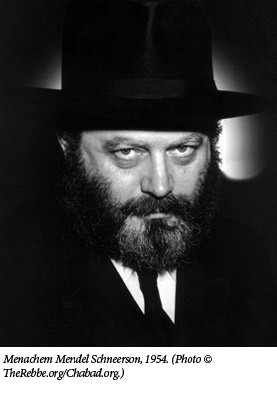
It is the committed core — made up now especially of the highly influential Orthodox and Conservative movements- which has always been the critical force for channeling Jewish behavior in the direction of genetic and cultural separatism. … It is the radicals who have reconstituted the Jewish community and have eventually won the day.
Kevin MacDonald, Separation and its Discontents[1]
Now that sixty years have passed since Menachem Mendel Schneerson assumed leadership of the fundamentalist Lubavitch Hasidic movement of Orthodox Judaism and seventeen years since his death, it is well worth giving the Rebbe and Lubavitch Hasidism a closer look. For years bumper stickers and billboards asserting that the coming of the Moschiach (messiah) is imminent, were exhibited everywhere. These are the people responsible for the huge models of Hanukkah menorahs that are still loudly displayed in the public square. Schneerson’s influence during his lifetime extended beyond his Hasidic sect; his legacy may hold broad implications for the future of Judaism.
The Hasidim or “pious ones” in Hebrew are a Jewish sect possessing an extremely ingrained sense of Jewish identity and practicing total ethnic separatism. Hasidism was at its height in the first half of the nineteenth century, and claimed the allegiance of millions in Eastern and Central Europe—perhaps a majority of East European Jews.[2) The present estimate for Orthodox Jews in North America is estimated to be 550–650 thousand. Many of the approximately 165,000 American Hasidim in New York City, the largest concentration, belong to three courts, the Satmar in Williamsburg, the Bobover in Boro Park, and the Lubavitchers in Crown Heights.[3] Many Hasidim distrust all lists and simply ignore the census forms because they consider it bad luck to count people. At the same time, secular Jews underestimate their numbers, because they don’t want the group to appear too influential. The Orthodox converse in Yiddish, and they preserve many of the traditions of pre-war styles of clothing and the religious traditions of Eastern European Jewry. Highly cohesive, collectivist, and authoritarian, they comprise an endogamous, genetically segregated kinship group and generally have very large families. A majority of American Jews are the descendants of East European Hasidim.
Chabad and Lubavitch are now used interchangeably to refer to the Hasidic dynasty (founded in 1796 in the Russian town of Lubavitch) of which Schneerson became rebbe. Chabad is an acronym for the Hebrew words “Wisdom, Understanding, and Knowledge,” while Lyubavichi is the name of the Russian town where the sect was first located at the end of the 18th century. The idea of racial superiority, which has been an underlying constant in Jewish narration, appears early in the history of the seven generation dynasty of Schneerson (also spelled Schneersohn) rebbes. Since Chabad philosophy incorporates the teachings of the Kabbalah, the Tanakh, the Talmud and the Tanya (see below), messianic thought and belief in racial superiority are intrinsic to the sect’s dogma.
(A note about the difference between rabbi and rebbe: while a rabbi is hired or appointed by his community, a rebbe’s commission is by acclamation and his position powerful and lofty. He is considered to be an intermediary between the divine and his community; his position accords him an unprecedented role in his followers’ lives and his word about all matters is final.) Read more






